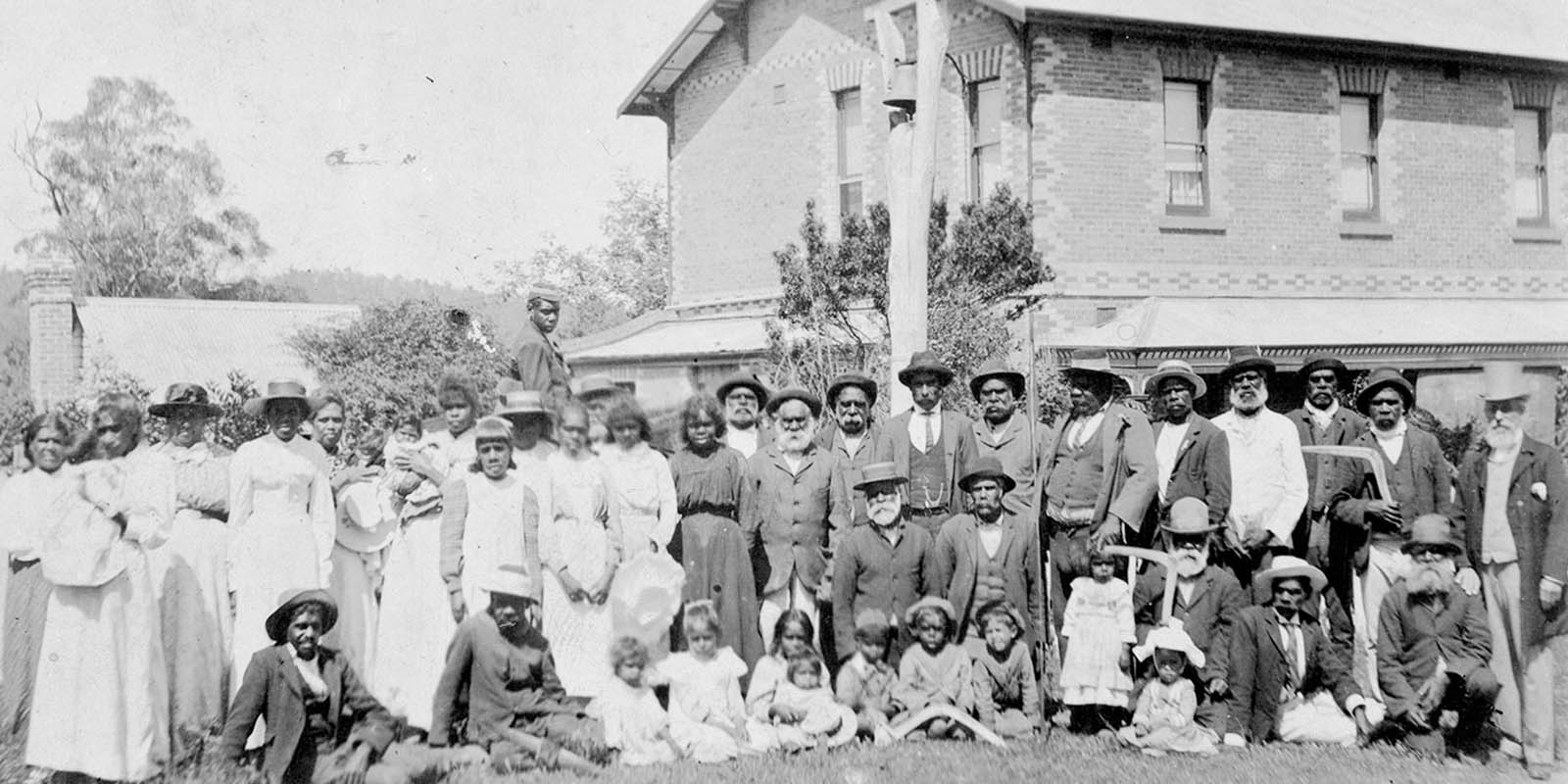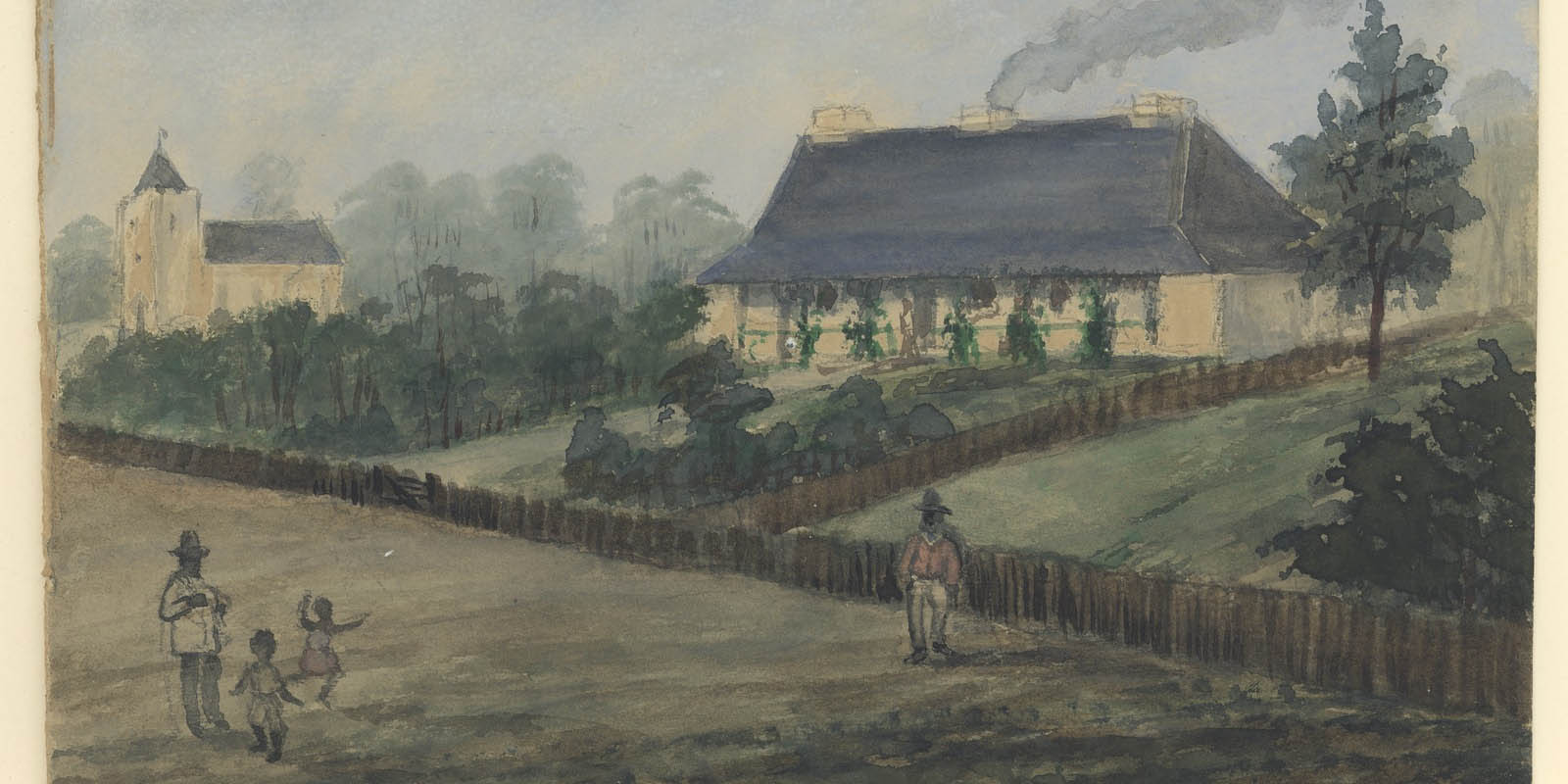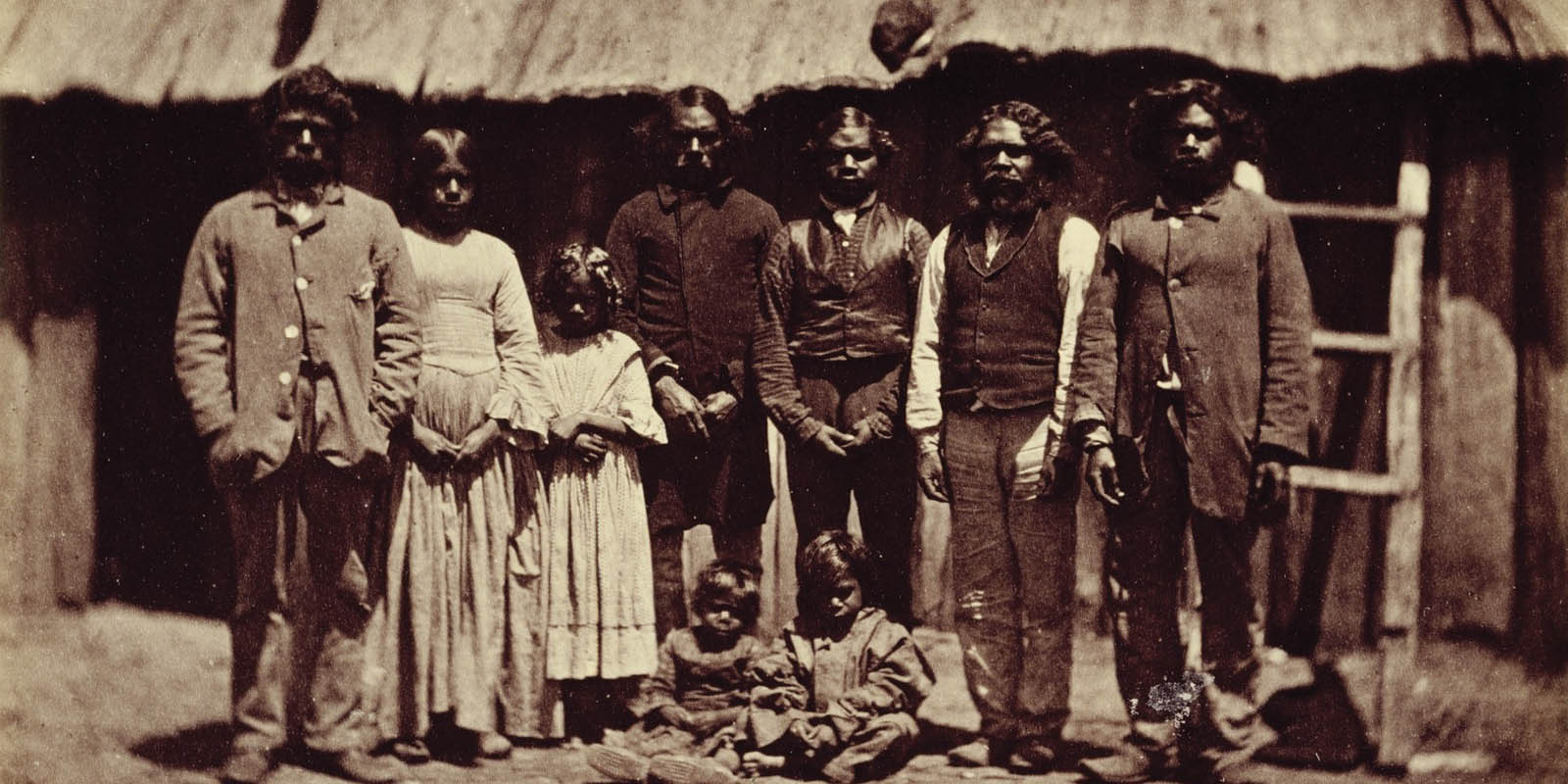Missions, reserves and stations were areas where Aboriginal people were placed in after being forcibly removed from their traditional lands.
Missions were usually under the control of churches and missionaries while a station or reserve was typically run by the government. Missions, reserves and stations were often strict and harsh, with government ‘protectors’ controlling the lives of Aboriginal people.
The reserves and missions had strict rules regarding what Aboriginal people could and could not do. Aboriginal people were not allowed to speak language or continue traditions and ceremonies and were punished if they were seen doing these things. As a result, a lot of language, culture and traditions were taken from us by the acts of colonisers.


William Barak and the Aboriginal community of Coranderrk. Image source: National Museum Australia.
A System of Protection
Prior to the introduction of missions and government stations there was a small time in which Protectorates were set up in a few locations - the key idea of this system was the 'protection' (and the eventual assimilation) of mob. Multiple Protectorate Stations were set up from 1840 including the Merri Creek Protectorate and the Loddon Protectorate in Fraklinford. For a short time these stations thrived however these stations were not supported by the local colonists and government so the protectorate system was seen as a failure and dismantled in 1848.
The Legislation
An inquiry into the welfare of the Aboriginal population was undertaken in 1858. By 1860 the report created from this inquiry was released. The report stated that
“… in order to make permanent provision for the maintenance and management of the Aboriginal population, a sufficient quantity of land be set aside in different districts, to be held in trust by a Board of Trustees resident in the particular district, in connection with a Central Board to be appointed from residents in Melbourne, under whose control any expenditure incurred on account of the Aboriginal inhabitants shall be defrayed.”
After the release of the report the Victorian Government established the Central Board Appointed to Watch over the Interests of Aborigines.
In 1869 the Aboriginal Protection Act was passed in Parliament, effectively allowing the government to regulate the lives of Aboriginal people. The board was re-established as Central Board for the Protection of Aborigines as recommended in the new act and gained control over Aboriginal people's lives. The Board regulated many aspects of Aboriginal people’s lives. This meant the government could control who we married, where we worked, where we could travel and more.
The earlier recommendation from the inquiry in 1858 regarding separating some land for the Aboriginal community along with the power given to the board to govern and regulate where Aboriginal people could and could not live assisted in the creation of the missions and reserves. This was effective in forcing the majority of Aboriginal people in the area to live within them.
These policies of ‘protection’ were based on the idea that Aboriginal people were a ‘dying race’ who could not save themselves.
As a result of these policies, the majority of Victorian Aboriginal people have family connections to one or more of the missions and reserves. While these spaces were often a source of suffering, control and denial of culture, many have since been handed back to the communities whose land they are based on where they have become centres for our Community and its resilience.
You can read more about the Aboriginal Protection Act and what it meant for our community here.


Moravian Mission, Dimboola Feb 19, 1885. Image source: State Library Victoria.
Reserves and Missions in Victoria
Church Missions
Ebenezer (1859 – 1904)
Ebenezer Mission was stablished in 1859 by Reverend Friedrich Hagenauer and Reverend F.W. Spieseke, German Moravian Missionaries. The mission was situated near the Wimmera River on Wotjobaluk country. The aim was to ‘civilise’ the local Aboriginal people and convert them to Christianity. After the Aborigines Protection Act 1886 passed in Parliament forced those considered to be ‘half-caste’ off the missions and stations the numbers at Ebenezer dropped and it was eventually closed due to the low numbers with most residents being forced to Lake Tyers.
Lake Tyers (1861 - 1971)
Lake Tyers Mission was established in 1861 by John Bulmer, a missionary of the Church of England and is situated on Lake Tyers, on GunaiKurnai land. As other missions and stations closed around Victoria the residents who were living there were moved to Lake Tyers. In 1971 Lake Tyers mission was handed back to the Aboriginal community and is now known as Bung Yarnda.
Ramahyuck (1863 – 1908)
Ramahyuck Mission was established in 1863 by Reverend Friedrich August Hagenauer, a Moravian Missionary who had previously helped to establish Ebenezer Mission. The mission is situated along Lake Wellington near the Avon River on GunaiKurnai country. Like Ebenezer, the mission was closed down due to low numbers after the passing of the Aborigines Protection Act 1886 and remaining residents were sent to Lake Tyers.
Framlingham (1865 - 1890)
Framlingham Aboriginal Station was established by the Church of England Mission in 1865 and is located on Kirrae Wurrong (Girai Wurrung) country beside the Hopkins River. It closed temporarily in 1867 when the Central Board for the Protection of Aborigines attempted to move residents to the newly established Lake Condah however this move was resisted and the Station re-opened in 1869 and then officially closed in 1890. Lands at Framlingham were handed back to Community in the 1970s.
Lake Condah (1867 - 1919)
Lake Condah Mission was established by Church of England missionaries and was situated about 3km away from Lake Condah on Gunditjmara land. Like Ebenezer and Ramahyuck, after the 1886 Act passed that forced ‘half-caste’ residents off the mission, the population dropped drastically, and the government took control over the mission forcing it to close in 1919. Lake Condah mission was handed back to Community in the 1980s after Gunditjmara people launched a legal battle in the high court in the landmark Onus v Alcoa case.


Group of Aboriginal men, women and children. Image Source: State Library of Victoria.
Government Stations
Coranderrk (1863 – 1924)
Coranderrk Aboriginal Station was established by members of Kulin Nation led by Wurundjeri senior men Wonga and Barak who petitioned the government for ownership of the land that they had settled on. Within 3 months the land was announced as a Station. Coranderrk eventually closed in 1924 after many of the residents were forced to leave as a result of the Aborigines Protection Act 1886 and the majority of residents were moved to Lake Tyers, however a few of the older residents refused to leave their home and spent their final days at Coranderrk.
Cummeragunja (1888 – 1953)
Cummeragunja Aboriginal Station was established after residents of the nearby Maloga Mission became unsatisfied with the strict religious lifestyle they were forced to live under. It is situated on Yorta Yorta land on the NSW side of the Murray River but was home to many Koori people. In 1939 an estimated 200 residents of Cummeragunja Station walked out of the station in a protest strike and many never returned settling down in townships in Victoria. In 1953, Cummeragunja was officially closed as a station and on the 9th of March 1984 the former station was handed back to the Yorta Yorta people through the newly created Yorta Yorta Land Council.
You can read more about the Cummeragunja Walk Off here.
Sources
- Report from the Select Committee Upon Protection to the Aborigines : together with the proceedings of the Committee
- Central Board Appointed to Watch Over the Interests of Aborigines (1860 - 1869), Find & Connect
- Central Board for the Protection of Aborigines (1869 - 1900), Find & Connect
- Committee reports - Victoria
- Aboriginal Protection Act 1869
- Aborigines Protection Act 1886
- Ebenezer Mission, National Trust Fact Sheet
- Ramahyuck
- Lake Tyers Mission Station, Find & Connect
- Lake Condah Mission Station, Find & Connect
- Framlingham Aboriginal Station, Find & Connect
- Loddon Aboriginal Protectorate Station at Franklinford
- The Protectorate, The Aboriginal History of Yarra
- Merri Creek Protectorate Station, Darebin Heritage
